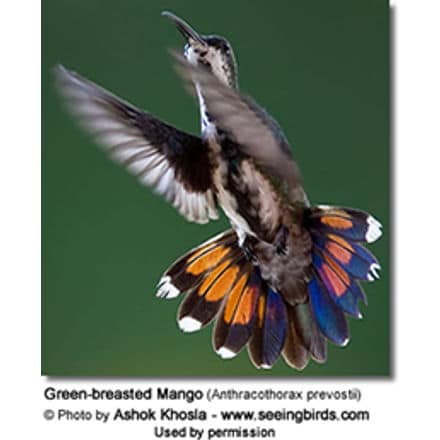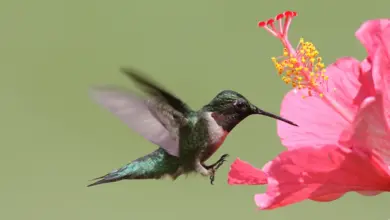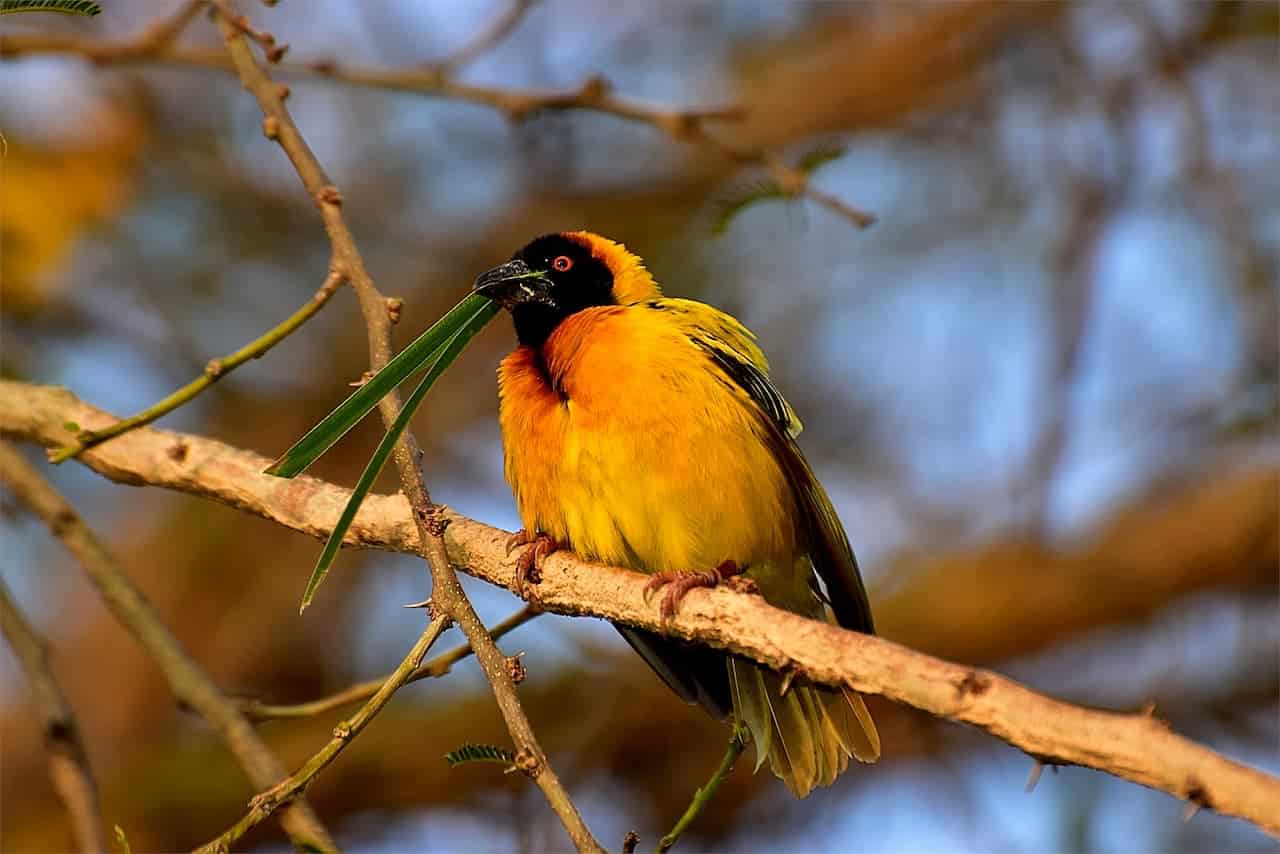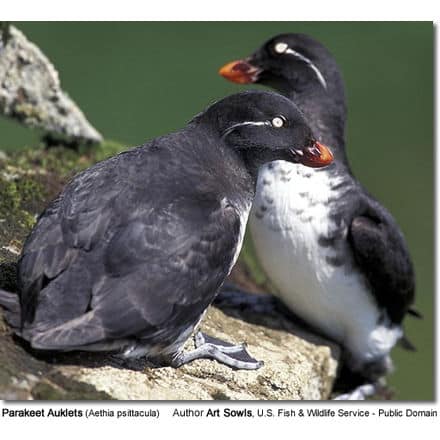Hummingbirds found in Georgia, USA
Following listed (with photos) are hummingbirds found in Georgia.
The hummingbirds listed on this page are known to occur in Georgia (or as indicated) are expanding their territories to the east and are likely to occur there in the future.
With global warming and winter-flowering plants and hummingbird feeders, the number of hummingbirds in this area will continue to increase.
The Georgia Department of Natural Resources, Wildlife Resources Division (DNR/WRD) is encouraging residents to put up at least one hummingbird feeder during the winter months (or plant hummingbird feeding plants – please refer to this page), to allow them to document new hummingbirds in this state.
They found that wintering hummingbird often return to the same hummingbird feeder year after year.
Nesting Hummingbirds:
The only KNOWN hummingbird species to nest in Georgia is the Ruby-throated Hummingbird.
Wintering Hummingbirds:
Most other hummingbirds in Georgia are migratory birds and only spend the winters there, such as the Allen’s Hummingbird, Buff-bellied Hummingbird, Broad-tailed Hummingbird and Rufous Hummingbird, Two hummingbirds that historically were mostly found in the western USA, also have made it to Georgia for the winter (also rare and isolated at this point), specifically the Calliope Hummingbird that visited the same hummingbird feeder in Decatur, GA year-after-year, and a male Black-chinned Hummingbird sighted in Roswell, GA.
The wintering hummingbird arrive in Georgia as early as August, but most will come mid-November through December and stay until late March or early April.
Year-round Hummingbirds:
Some do remain in this state year-round, for example, the Ruby-throated Hummingbird, Archilochus colubris – historically, only nests in Florida, but because of wintering blooming plants and easy access to hummingbird feeders, some are residing in Georgia year-round.
The following hummingbird species are known to occur in Georgia (with photos and ID assistance):
Ruby-throated Hummingbirds (Archilochus colubris) – Native Breeders – Common during the summer, rare in the winter. The only hummingbird to nest in Georgia; some are now remaining year-round. The migratory birds arrive in south Georgia early March. In the mountain areas, they usually arrive a couple of weeks later. They usually travel back to their wintering territory around mid-October. Males usually depart first, and females and the young follow about two weeks later.
The male has a ruby-red throat, a white collar, an emerald green back and a forked tail.
The female has a green back and tail feathers that are banded white, black and grey-green.
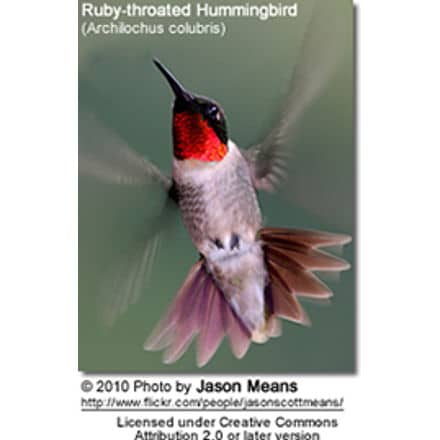
Rufous Hummingbirds (Selasphorus rufus) – The most commonly observed wintering hummingbird in Georgia, other than the Ruby-throated Hummingbird in the southeastern United States.
These hummingbirds are usually found in gardens and at feeders. These birds are fearless, and are known for chasing away other hummingbirds and even larger birds, or rodents away from their favorite nectar feeders and flowers.
Males can easily be identified by their glossy orange-red throats.
Females have whitish, speckled throats, green backs and crowns, and rufous, white-tipped tail feathers.
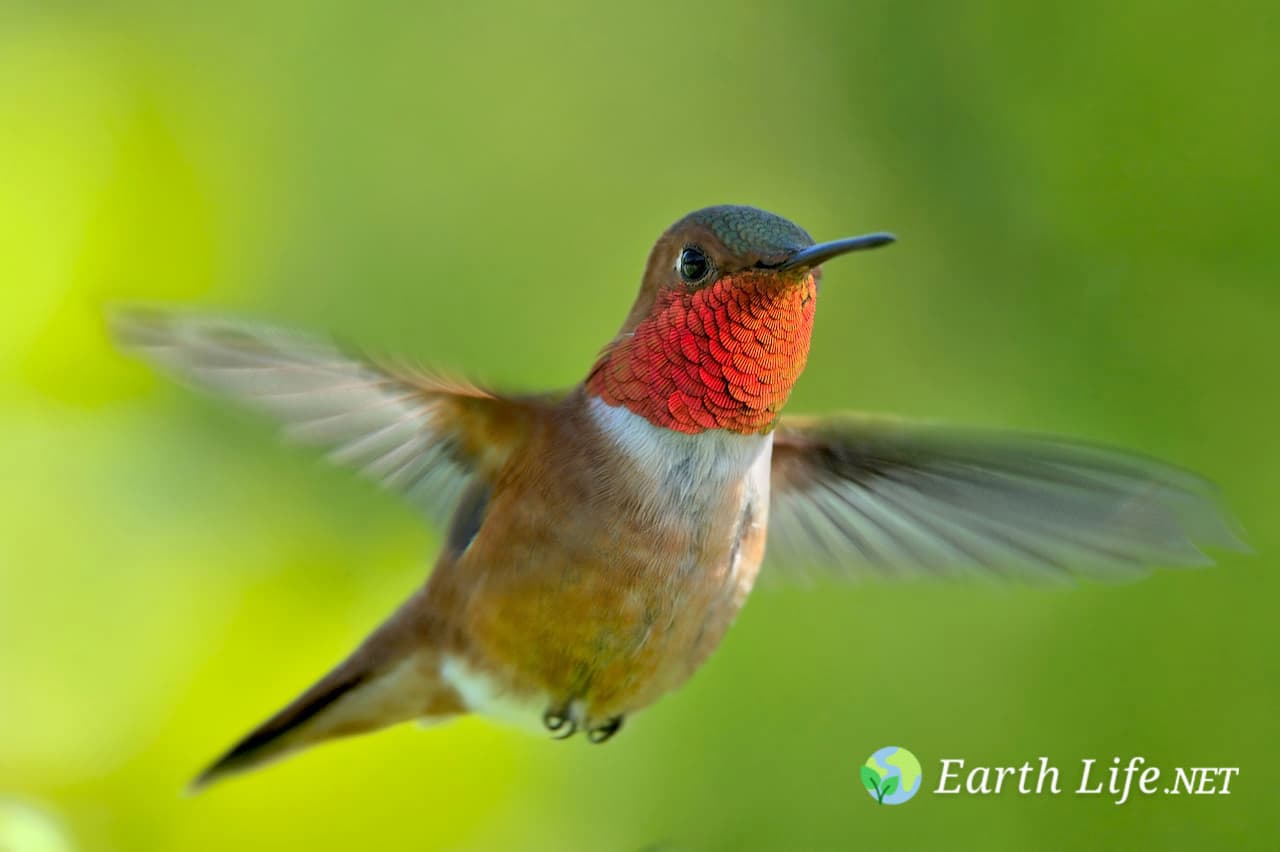
Rufous Hummingbird versus the similar Ruby-throated Hummingbird (Identification)
Blue-throated Hummingbirds (Lampornis clemenciae) – Common in spring, summer and fall. Rare in winter in the Gulf Coast regions.
The upper plumage is dull green, fading to a medium grey on the underside. It has white stripes behind the eyes and a narrower stripe extending backward from the corner of its relatively short bill, next to a blackish cheek patch.
The male can be identified by the iridescent blue throat patch (gorget), which may appear black or grey color in poor light.
The female and young have grey throats.
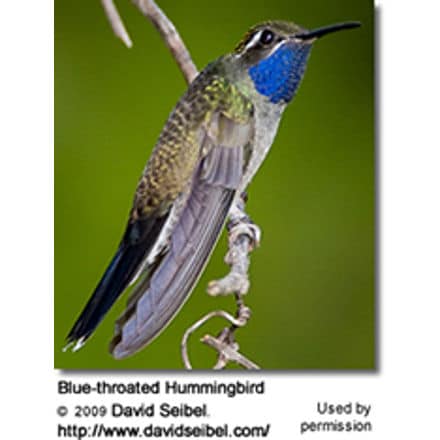
Allen’s Hummingbirds (Selasphorus sasin) – Uncommon Wintering Hummingbirds – As of 2011, less than a dozen of these hummers were recorded in Georgia – Historically, these birds nested in coastal California and wintered in Mexico; but more and more of them are remaining in California year-round or are traveling to the eastern United States for the winter. The Allen’s Hummingbird is often confused with the Rufous Hummingbird, but the Allen’s can be identified by the green back whereas the Rufous Hummingbird has a coppery back.
The male has a throat that ranges in color from orange-red to yellow-orange, a back that is bright green, a rump that is rufous and its tail feathers are rufous tipped in black.

Anna’s Hummingbirds (Calypte anna) – Rare Wintering Hummingbird – Only three confirmed records for Georgia. Occur in fall and winter in all regions. Found in suburban gardens and at hummingbird feeders … The Anna’s hummingbird lives in the Far West and winters in states like New Mexico and Arizona.
One of the larger and the most vocal hummingbirds in the United States, where it is the only species to produce a song; specifically the males produce a complex series of scratchy noises, sounding like a sharp “chee-chee-chee; when moving from flower to flower, they emit toneless “chip” vocalizations. All other hummingbirds in the United States are mostly silent.
They are well known for their territorial behavior; the male makes elaborate dive displays at other birds and sometimes even at people. At the bottom of their dives, they produce high-pitched loud popping sounds with their tail feathers.
Males have glossy dark rose-red throats and crowns, which may appear black or dark purple in low light. The underside is mostly greyish; and the back metallic green.
Females have light grey chests with white and red spotting on the throat, greenish back and white tipped tails.
They resemble the Costa’s Hummingbirds (not currently found in Georgia), but the male’s Costa’s Hummingbird’s gorget (throat feathers) is longer than that of the Anna’s. They are larger than the Rufous Hummingbirds and lack the rusty coloration of the Rufous Hummingbirds.
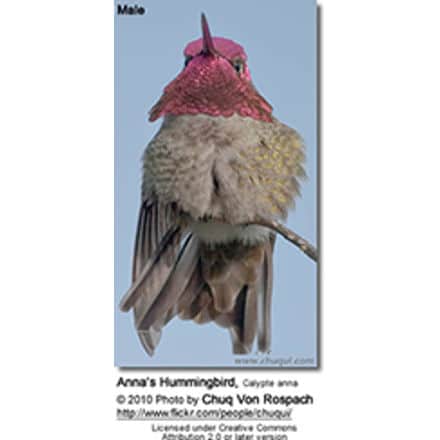
Black-chinned Hummingbirds (Archilochus alexandri) – Rare Wintering Hummingbirds – Only five confirmed records for Georgia. Rare in winter, spring, and fall in all regions. Found in open woodlands, parks and gardens.
The male has a black, shimmering throat with a purple edge and pale feathers below that create a collar. However, unless the light is just right, the head looks all black. His back is green and there are some green feathers covering the chest.
The female is pale below (sometimes with a slightly speckled throat) and her back is green.
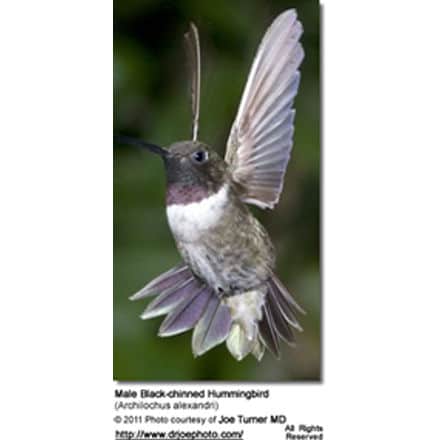
(Amazilia yucatanensis) – Accidental / Vagrants – Occur in fall, winter and spring
The male’s throat is a metallic golden green and the red, dark-tipped bill is straight and slender. Back and head are mostly metallic olive. The lower chest ranges in coloration to whitish with various shades of grey or green, or buffy (yellowish-brown).
The tail and primary wing feathers are rufous (reddish-brown) and slightly forked. The underwing is white.
The female is generally less colorful than the male and has a a dark upper bill
Broad-billed Hummingbirds (Cynanthus latirostris) – Accidental / Vagrants / Wintering Hummingbirds – These mostly Mexican hummingbirds venture into the United States regularly; they mostly visit the southern parts – but a few vagrants travel as far north as Wisconsin. Only one confirmed sighting in Georgia of an adult male that overwintered in a backyard in Macon during the winter of 2001-2002.
The male is glossy green above and on the chest. He has a deep blue throat. His straight and slender beak is red with a black tip. His slightly forked tail is dark above, and the under tail feathers are white.
The female is less colorful than the male. Her throat, chest and belly are light to medium grey. She has a white stripe over each eye.

Broad-tailed Hummingbirds (Selasphorus platycercus) – Accidental / Vagrant s- Very Rare Winter Visitors – Occur in late fall, winter, and early spring, mainly in Gulf Coast region. gardens, along forest edges and at hummingbird feeders. The broad-tailed hummingbird lives in the Rocky Mountain states, but occasionally comes as far to the east as Alabama and Georgia.
Males can most easily be identified by their iridescent, rose-red throats, white chest feathers and metallic green back and crown and their rounded tails. The males’ tails make whistling noises in flight.
Females lack the flashy throat patch of the male and are mostly pale below. Their white-tipped outer tail feathers are rust-colored close to the body and blackish in the center; the tail feathers in the center range from green to blackish.
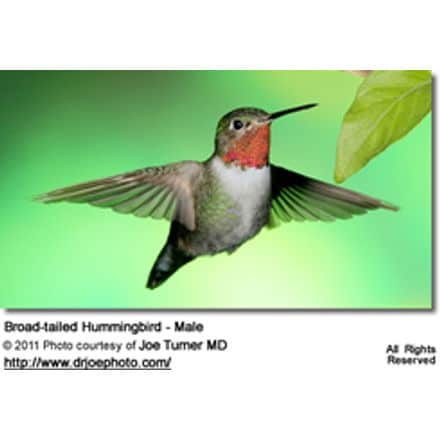
Calliope Hummingbirds (Stellula calliope) – Accidental / Vagrant – Uncommon Winter Visitor – The first one has been recorded in Georgia during the winter of 1998-99. To this date, only one or two of them are reported each winter.
The smallest breeding bird in North America. They are most easily confused with the Rufous Hummingbirds and the Broad-tailed Hummingbird.
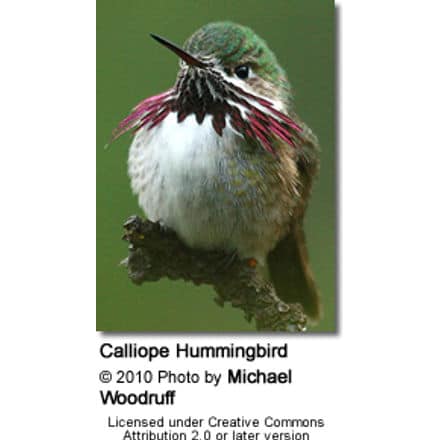
(Anthracothorax prevostii) – Accidental vagrants
These hummingbirds are native to Mexico, Central America down to Costa Rica, and some Caribbean islands. However, juveniles especially have been venturing into the United States. A juvenile bird, possibly a male, was reported in in Dublin, Georgia, in October 2007.
Adult Males: Glossy bright green plumage. The vent and the sides (blanks) are more yellowish brown. Broad blue area from its throat down to below the chest – which may appear black in poor light conditions. Outer tail feathers range in color from an orangey-red to magenta or a deep purple tipped with black.
Females and Juvenile Males have 3 to 4 white-tipped outer tail feathers; there is a broad magenta and iridescent dark blue band on most tail feathers. The back is bronze-green. Below they are white with a dark central stripe that changes from black at the chin to blue-green on the throat.

Magnificent or Refulgent Hummingbirds (Eugenes fulgens) – Accidental / Vagrant – Georgia’s largest hummingbird. Only two of them were documented in Georgia (one in summer).
They are nearly twice as large as any other hummingbird species found in this State, and can often be identified by their size alone.
The male has a metallic green throat and a black chest. His forehead and crown are purple and the back is dark green.
The female plumage is less bright. Her chest is solid grey. Her back and crown are olive green. Her tail feathers are pearl-grey tipped.
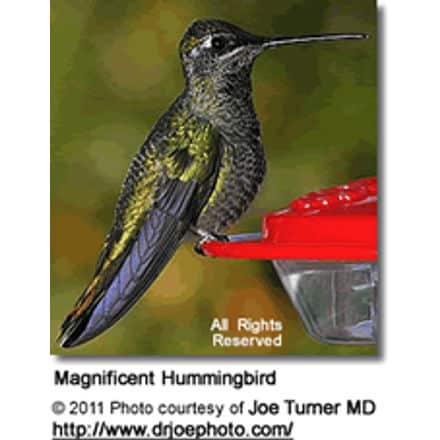
(Colibri thalassinus) – Rare / Accidental – Only one verified sighting in Thomasville, July 2001. They are mostly resident in Mexico and Central America, but some seasonal movements have been observed. They may wander north to the United States and even as far north as Canada.
An albino (all white) hummingbird (undetermined) was also photographed in Sept. 2004 in Ellijay, GA
Hummingbird species expected to expand their territories into Georgia:
White-eared Hummingbirds (Basilinna leucotis) – Status: ?????
ID: Both the male and female White-eared Hummingbird have a prominent white ear stripe (more boldly colored in the male) for which this species was named.
Hummingbirds found in the USA (by U.S. State) … Canada … Mexico … Puerto Rico … Jamaica … Honduras

